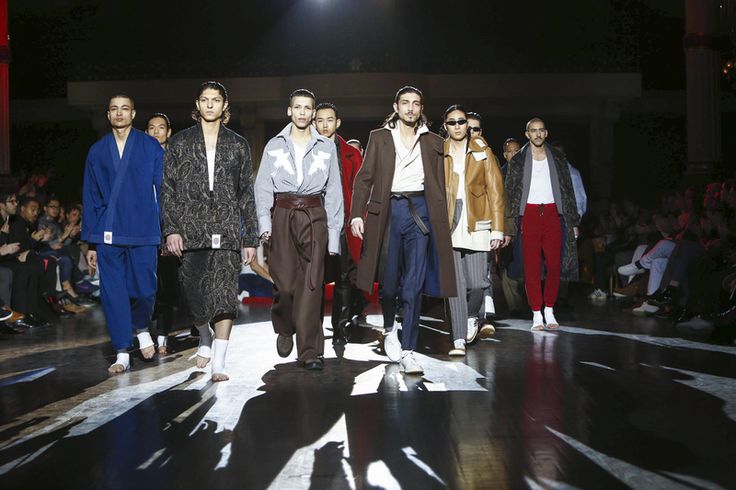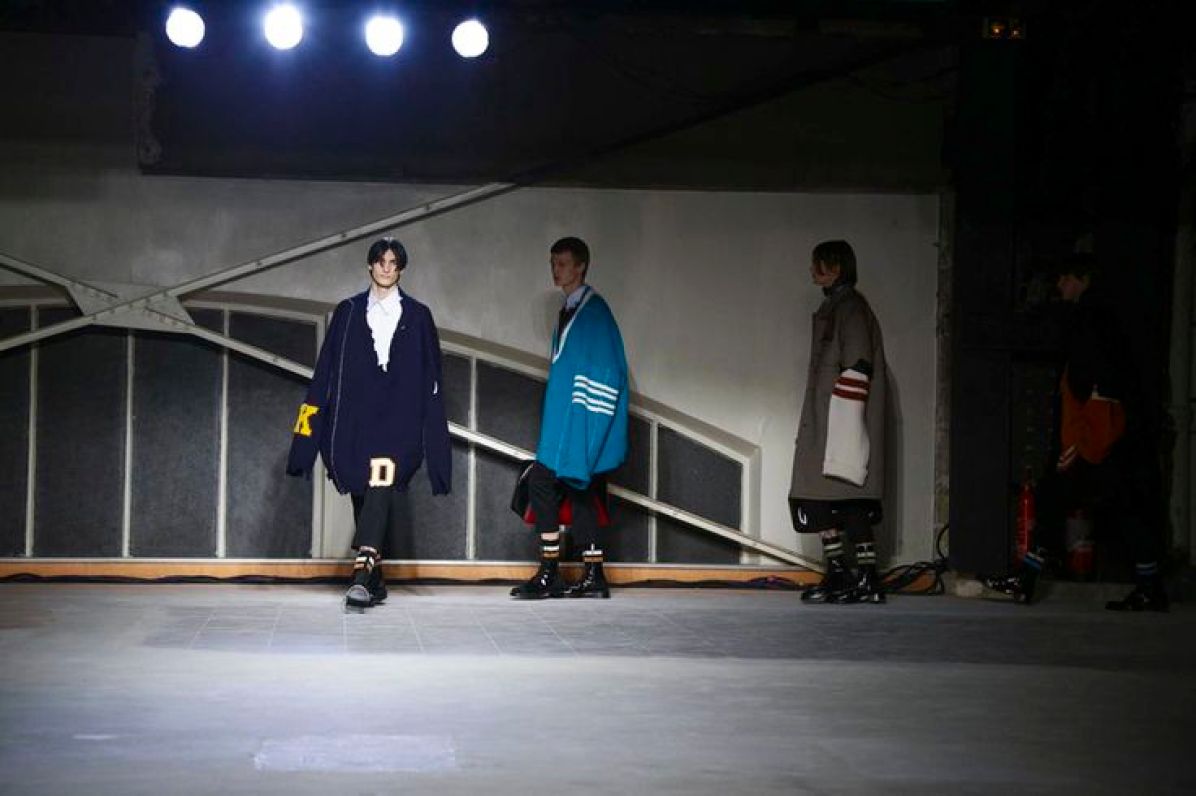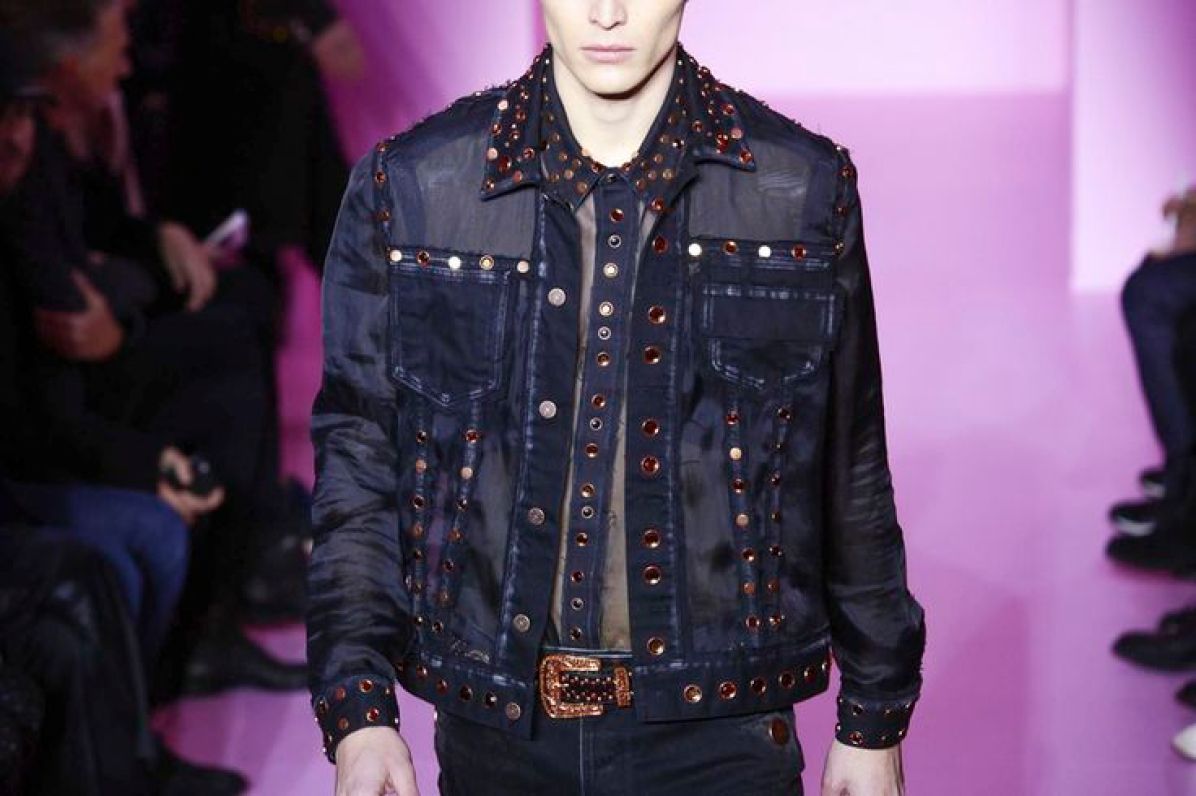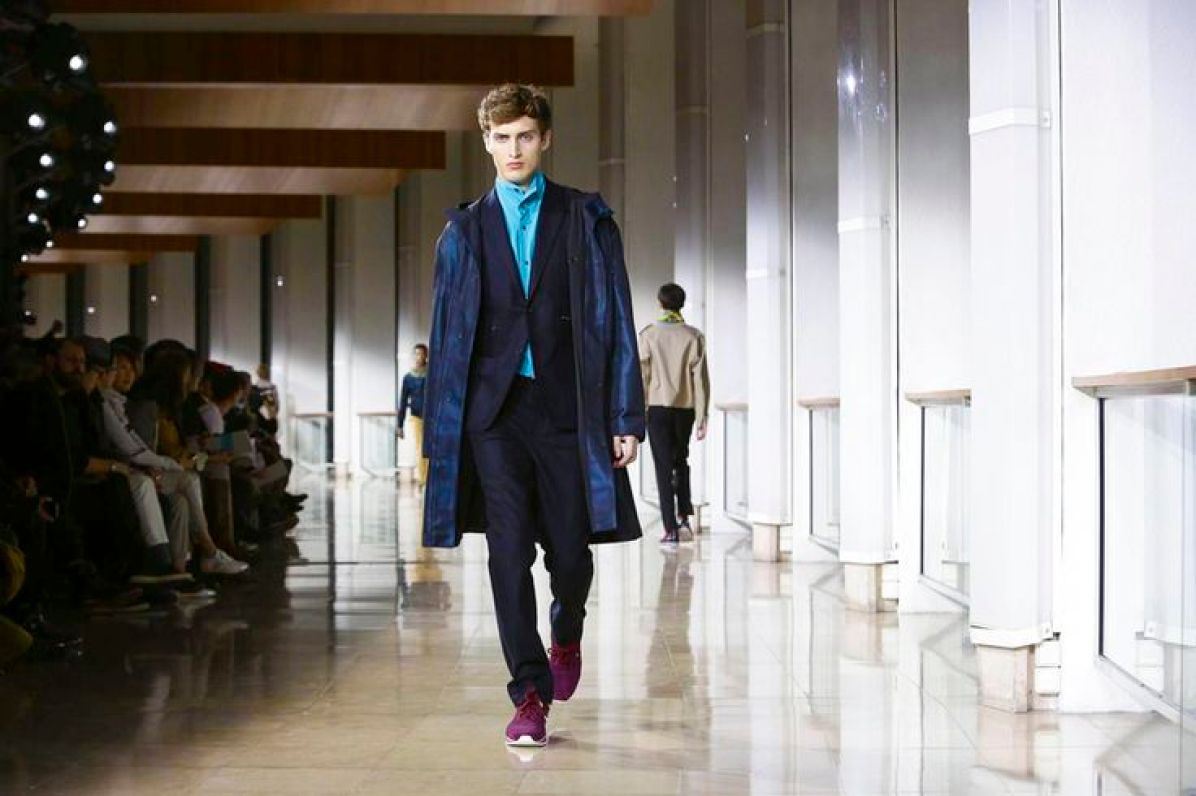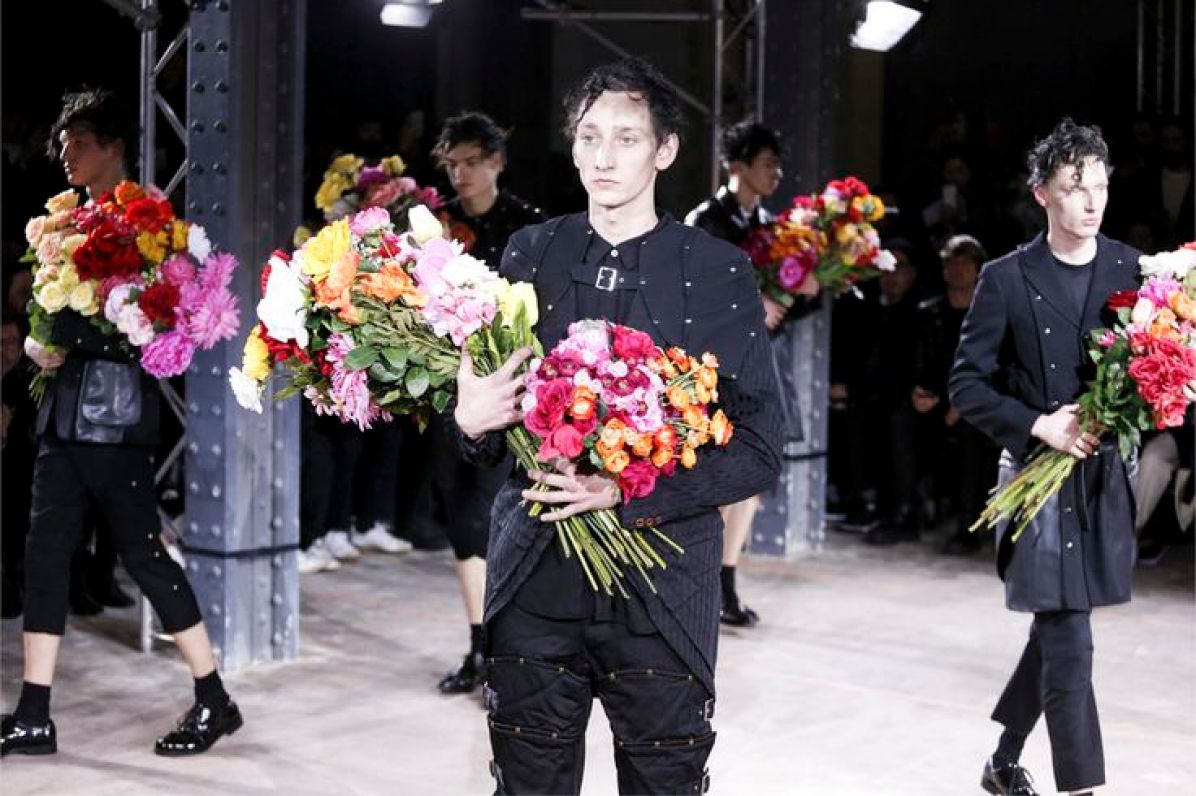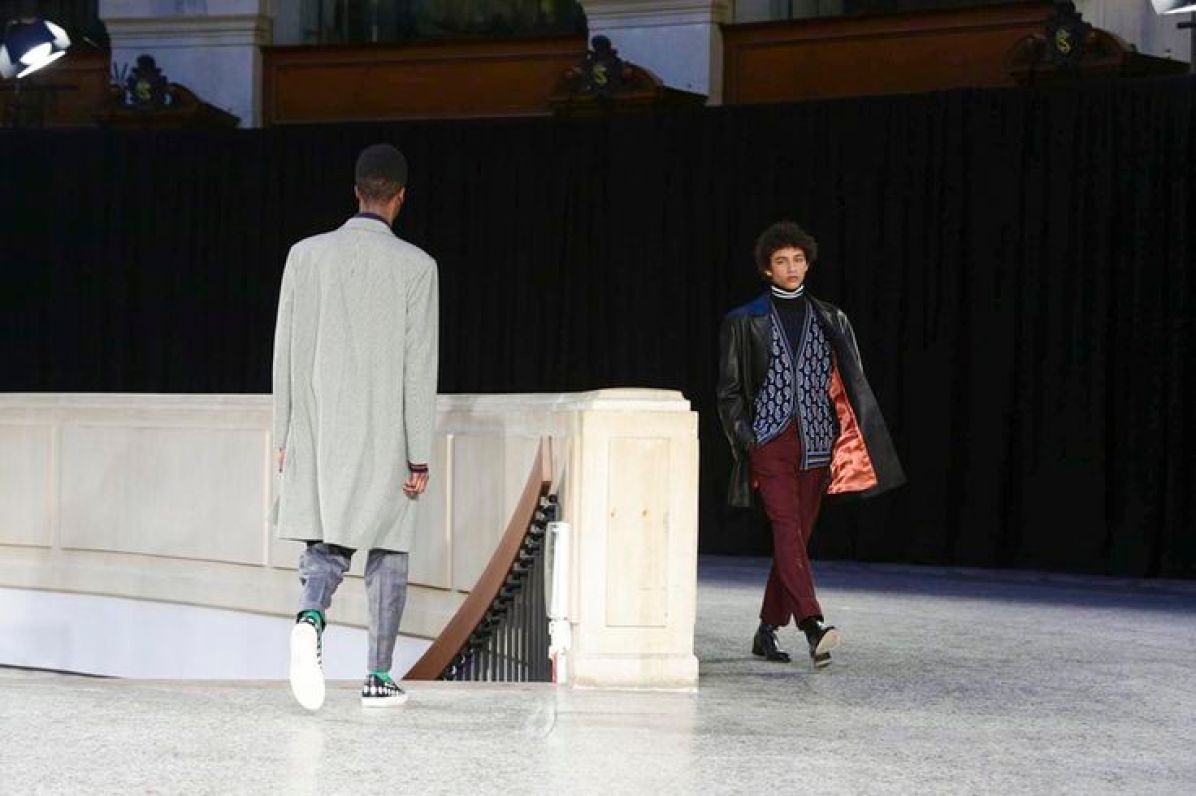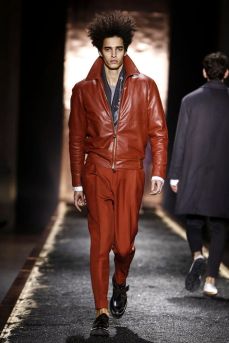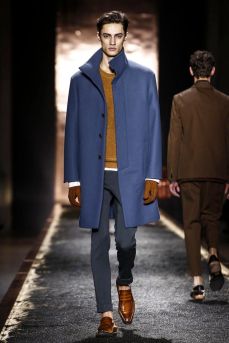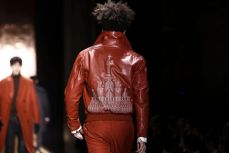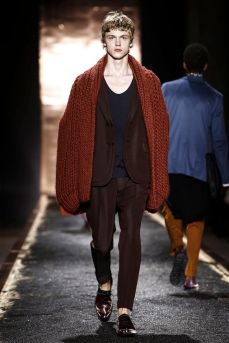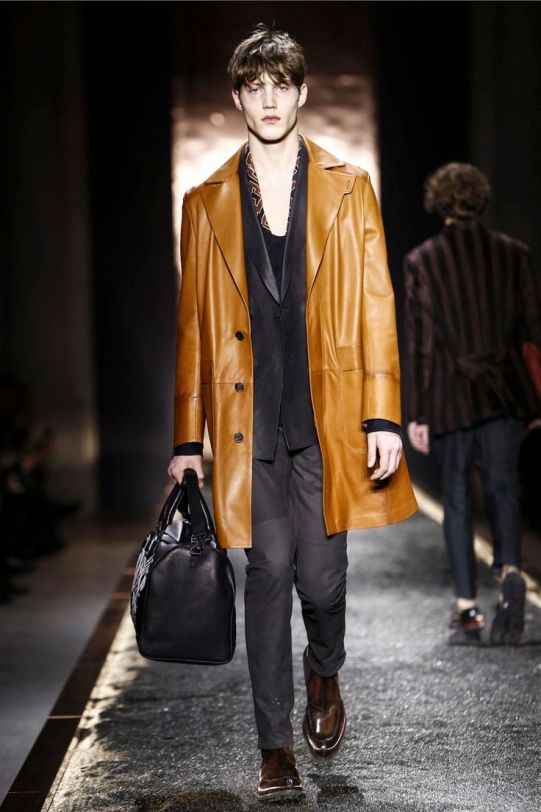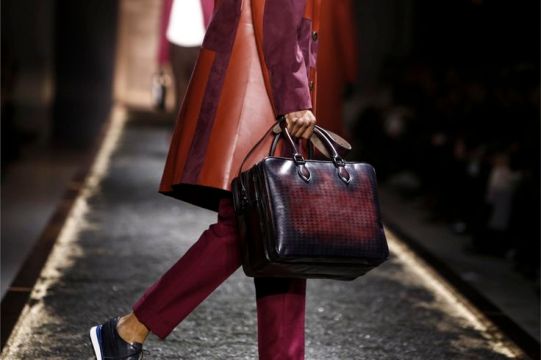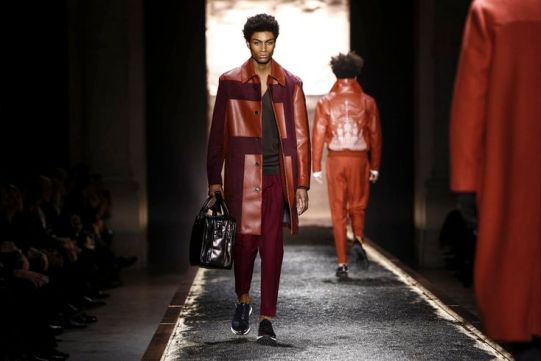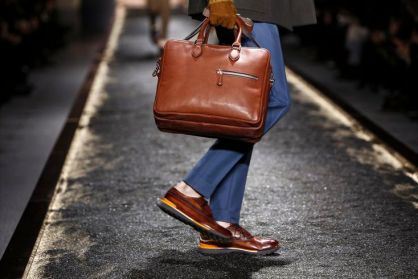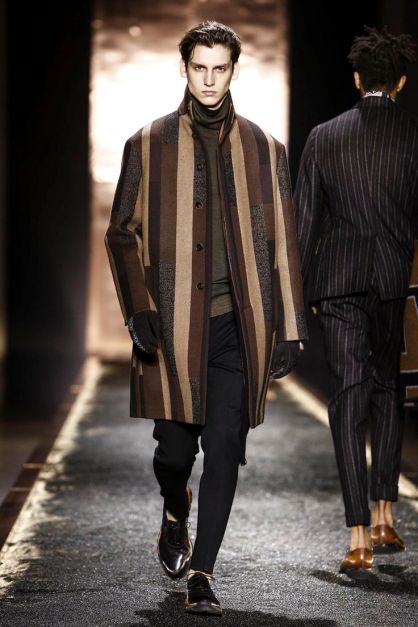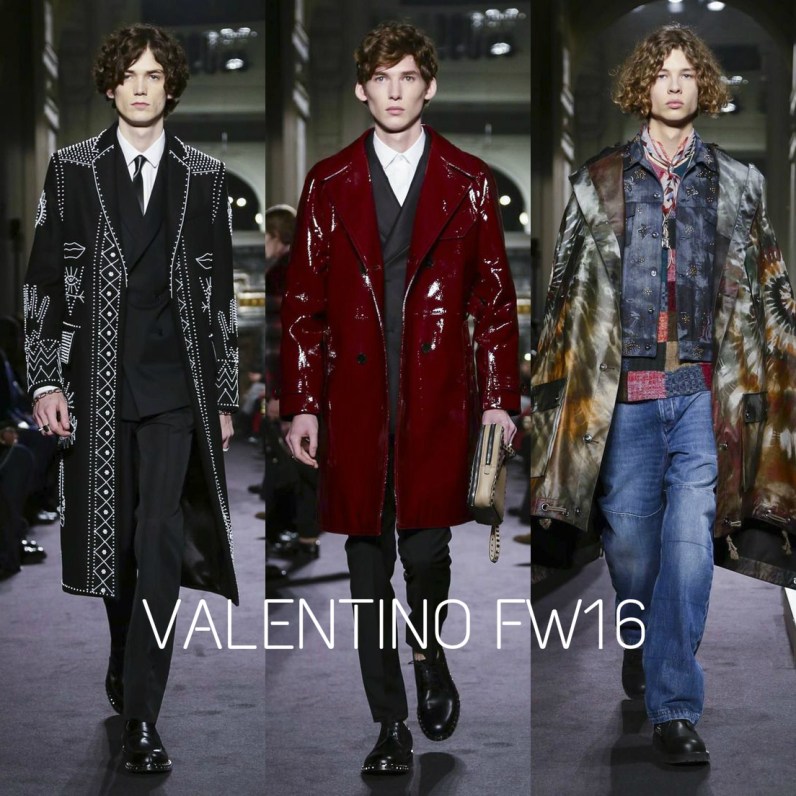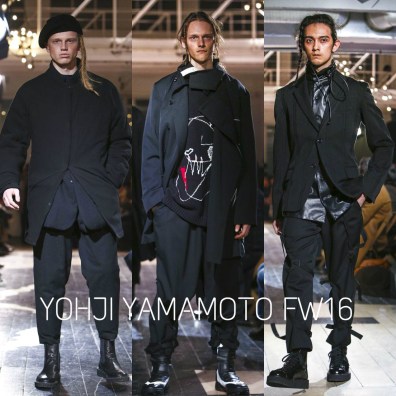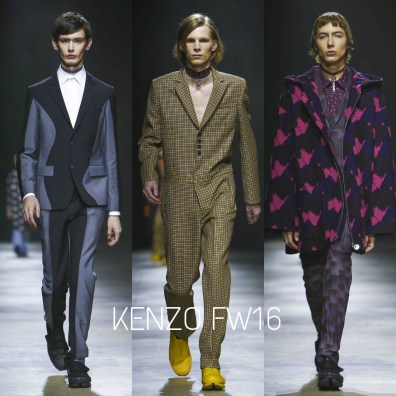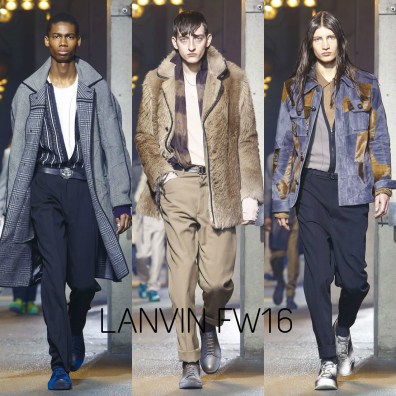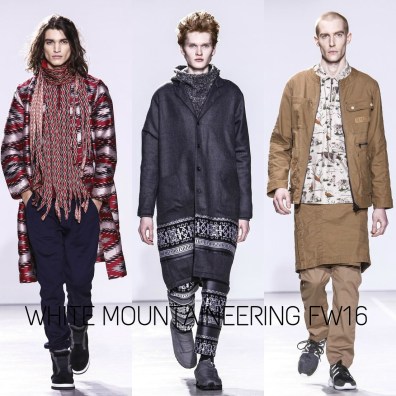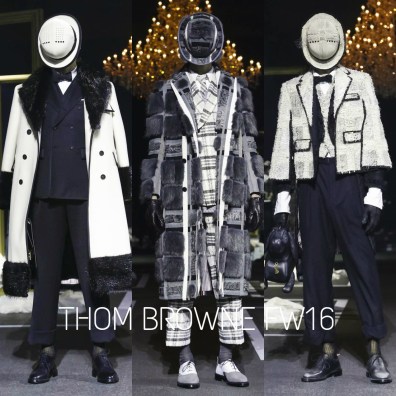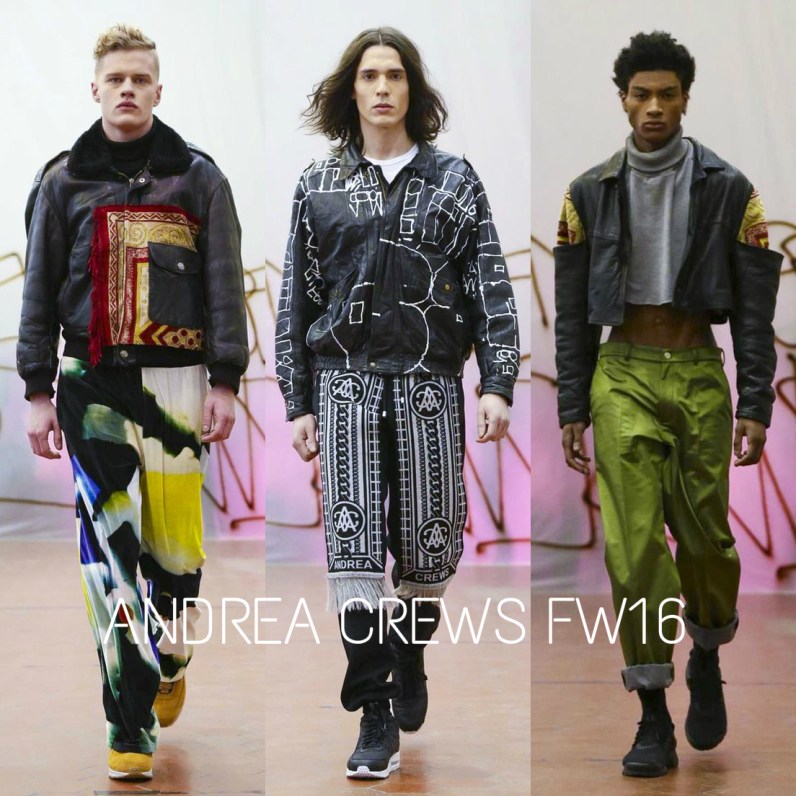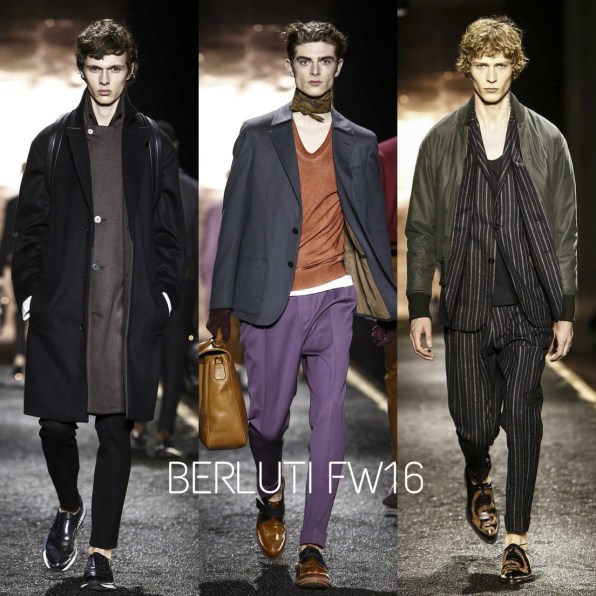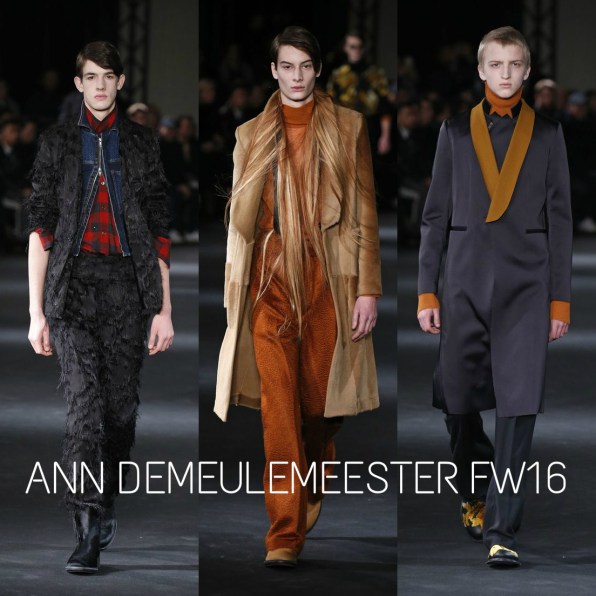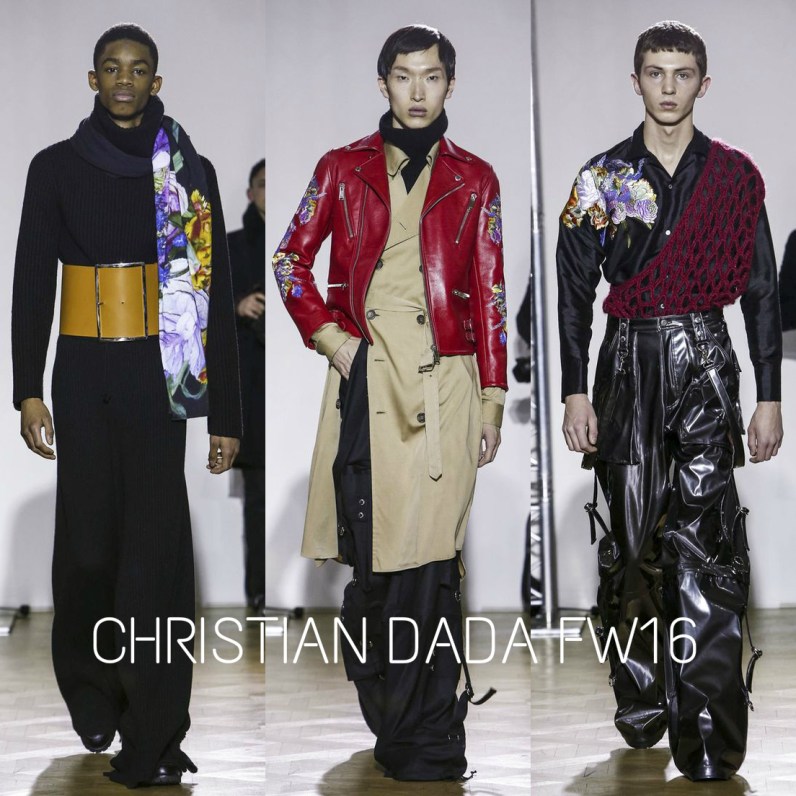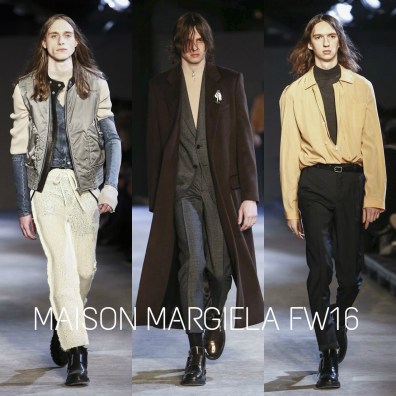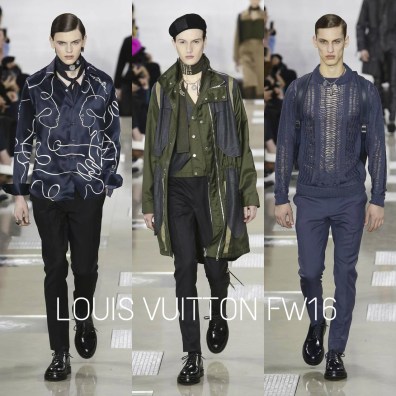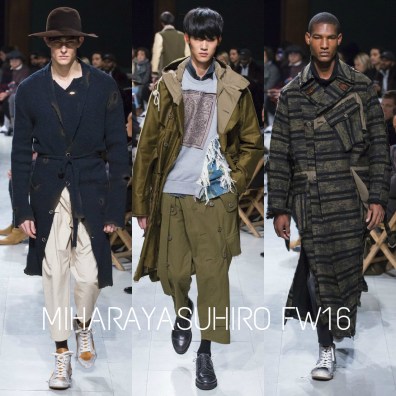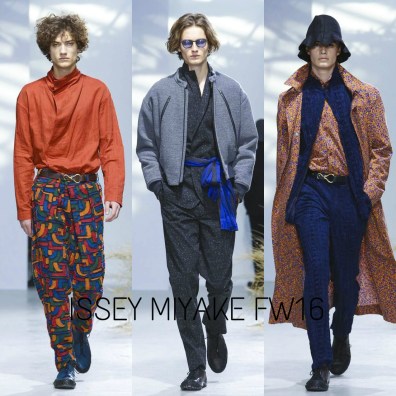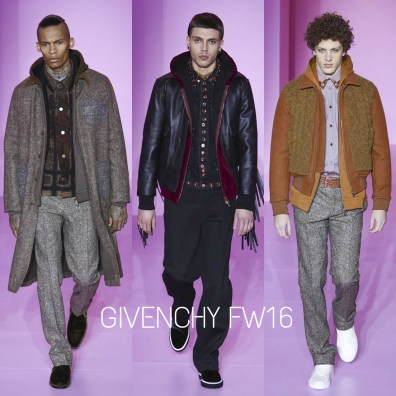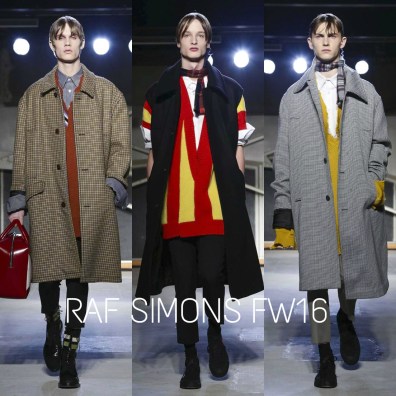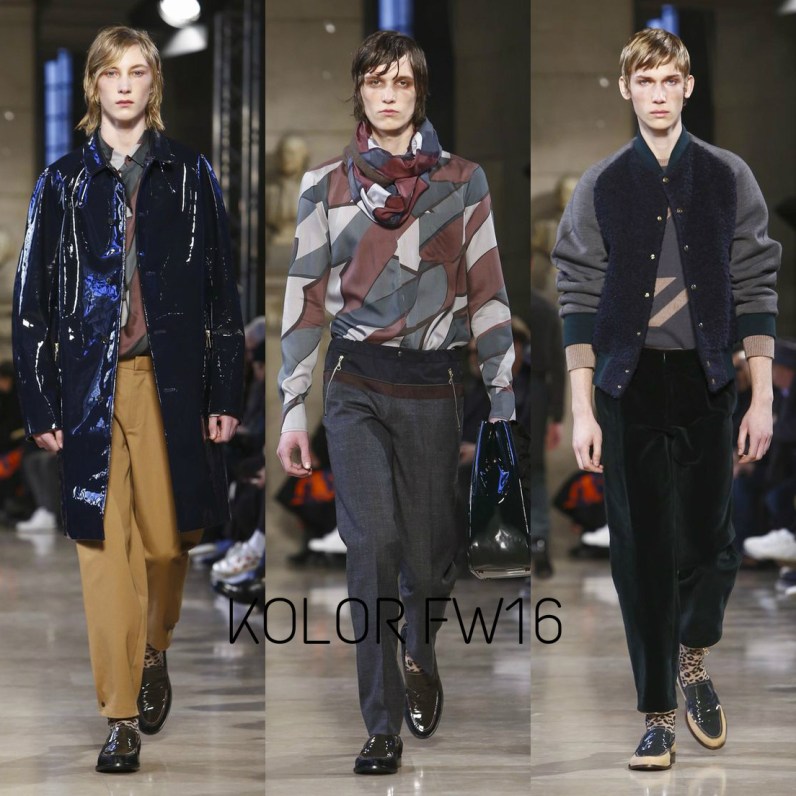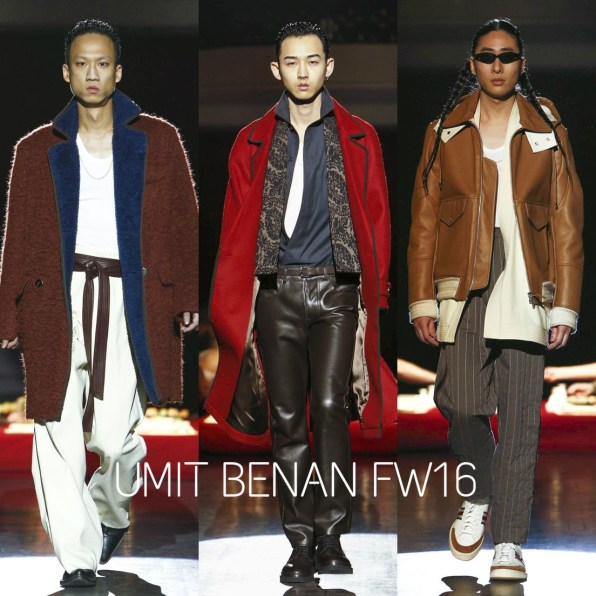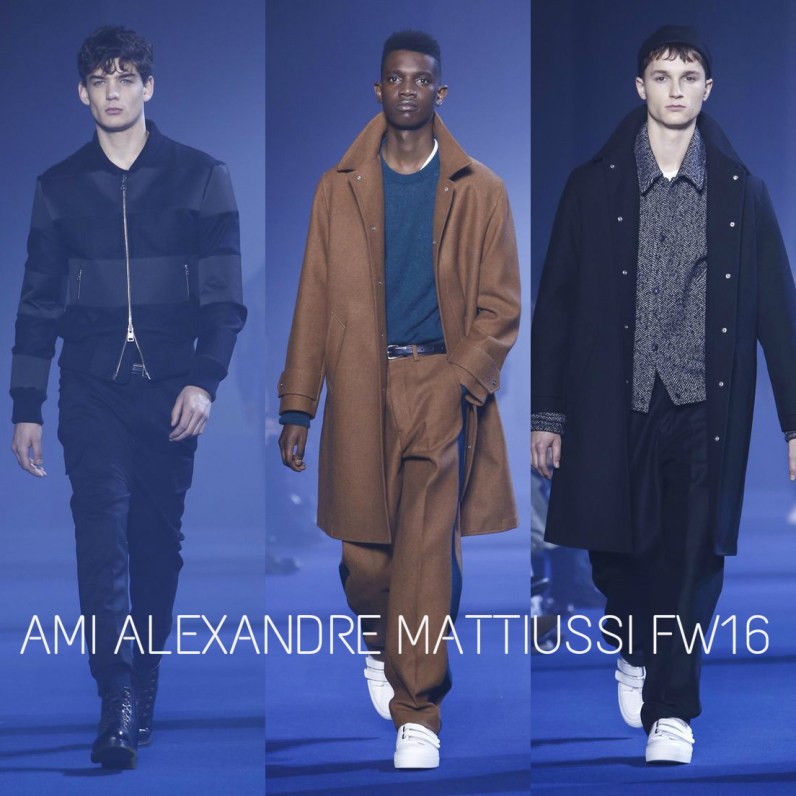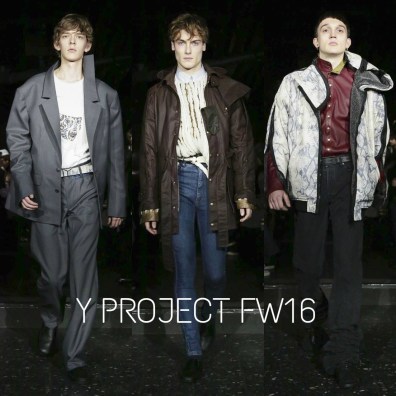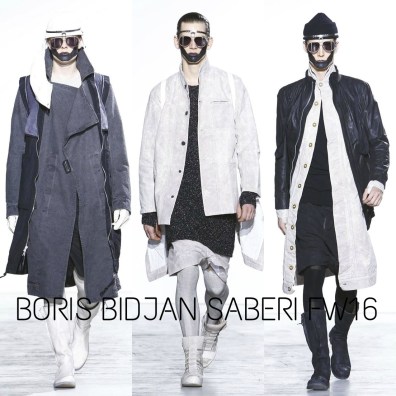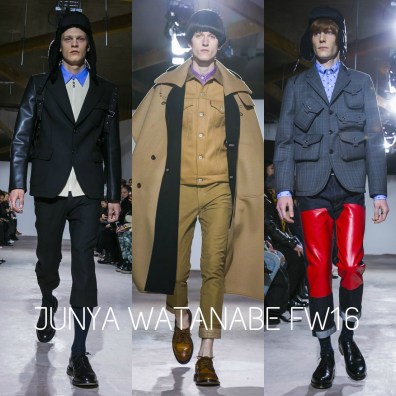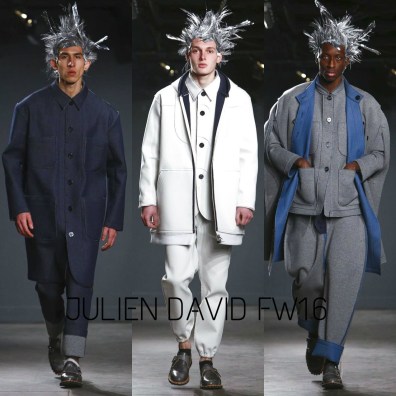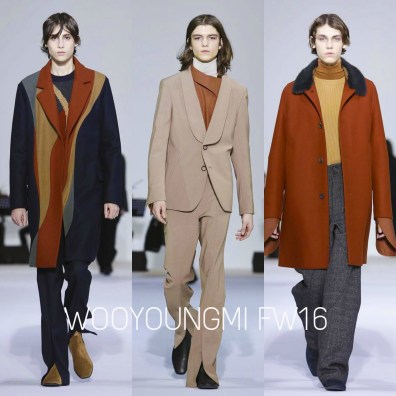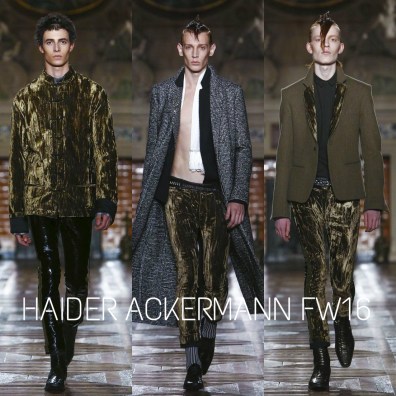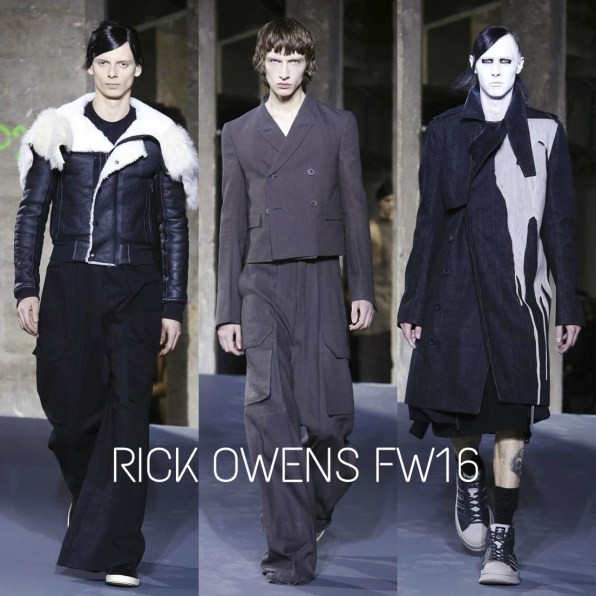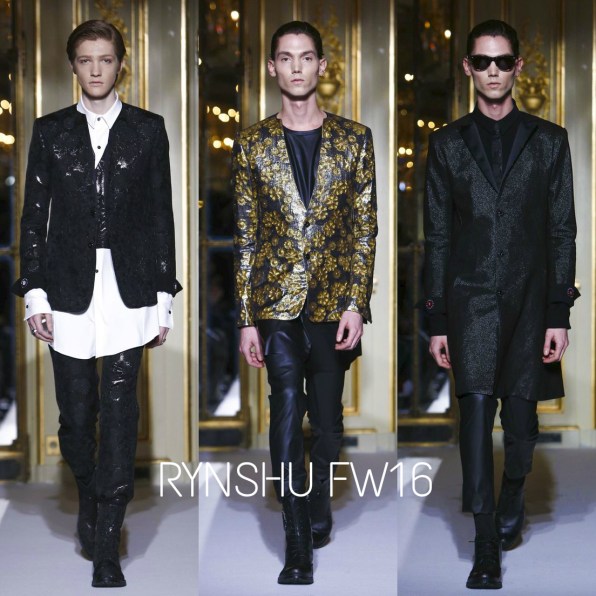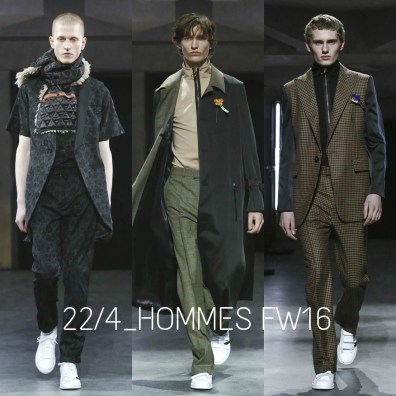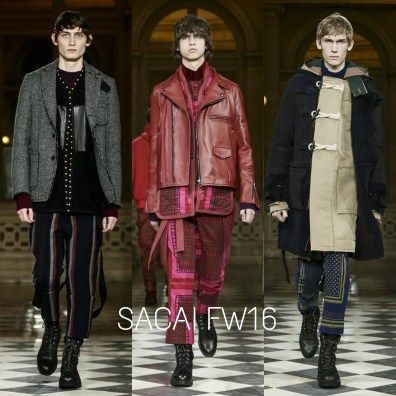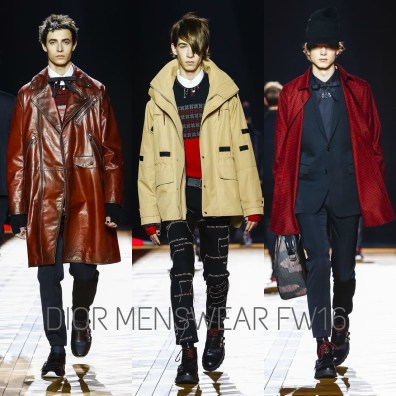By the time Raf Simons waved thank you to his audience, whose collective bated breath about his first post-Dior show was finally let go, Day One of the Paris Menswear shows seemed like a potent shot in the arm for the cold, damp City of Lights. It was a shot of youthful vitality.
Simons‘ models, one more fresh-faced than the other, walked out in preppy uniforms that were elongated and torn at the edges, like a band of high-schoolers who couldn’t care for decorous turnout. There were bright colours, an underwear-drawer brand of secrecy, and a defiant attitude.
He cited as inspiration the influences upon his youth: David Lynch’s eerie TV series Twin Peaks and Wes Craven’s Scream, as well as the dress codes of American youth, Belgian youth, and the Boy Scouts – from whom Valentino’s Maria Grazia Chiuri and Pierpaolo Piccioli also sampled.
The duo took the recognisable Scout get-up – with its epaulettes, flap pockets, badges, and scarves – and rendered it all in tribal dyes and weave patterns, tapestries of plaid and denim, and sometimes even butterflies. The common theme is youth, but also adventure, an unceasing forward movement of discovery.
This insistent display of young, wild, sometimes rebellious energy continued throughout the five-day fashion event.
Later in the Paris Menswear FW16 season, Givenchy’s Riccardo Tisci sent out models clad in a collection that melded the edginess of urban street, the drama of Goth, and the raw ruggedness of Americana. Put together and read aloud: rebel youth.
Lanvin, Maison Margiela, and Kenzo pulled out youth-led trends of the past still iconic today, promising a revival of the free-spiritedness that marked ’60s hippiedom and the techno wave of the late ’80s. Ensembles boasted vivid stripes of dyed colour, kitschy repeated graphics, vintage chokers, throwback roll necks, and statement coats cinched at the waist in metallic clasps. Boris Bidjan Saberi‘s was a futuristic take on youth gear, its concrete palette of soft whites, greys and blacks and wraparound sunglasses a nod to dystopic sci-fi, such as Total Recall – not to its customary desolation, but to the toughness of its characters.
Even Hermès, usually a bastion of classic, buttoned-down looks, ventured into the young and the wild. Granted, the latter third of the collection was all-black and all-business, but calfskin bolide bags earned some cartoon fangs. Cotton chinos got swapped out for a glossy polyester-like fabric; trench coats shed their epaulettes and most of their pockets for a modern streamline; cardigans were zipped-up, not buttoned-down. Suits got paired with sneakers. Add the iridescent turquoise and strawberry sorbet pink – colours seen most often in self-serve slushy parlours – and there is no denying a wave of youth has indeed swept us under.
A TRIBUTE TO PARIS
The terrorist attacks last November left no visible scars on the runway shows, save perhaps Walter van Beirendonck‘s direct, continued appeal to “stop terrorising our world” and Comme des Garçons‘ garlands of white flowers draped over black suiting. As wounds finally begin to heal, the unplanned, exuberant turn towards all things youth by French and foreign designers alike seemed like the runway’s oblique résistance against the grim state of affairs in the city, the union, and beyond.
Those less inclined to read too deeply into symbolism may see this as an obvious petition for social (media) clout. In the world of high fashion, a brand’s name is its first and foremost selling point. And as Oliver Rousteing has demonstrated, and Hedi Slimane before him, the youth are indispensable in any brand’s bid for a “cool” reputation. Every brand wants to be talked about, to be #trending, to wield its own “army” à la Balmain. And what better way to do that than target and tailor your product directly to that audience?
That being said, it’s undeniable that the Paris menswear runway designers had more than just money on their minds. Many designers took time to celebrate the French capital and its distinguishing features. The Balmain man was an updated Napoleonic military aristocrat, flaunting all things Imperial French: Baroque embroidery, harlequin rendered in gold and silver, diamond-stitched leather and decadent fur.
Dries Van Noten paid homage to the opulent Opéra Garnier, citing its dramatic ambience as a starting point for his collection. Working with Canadian opera director Robert Carsen, a Knight of the Légion d’Honneur, Van Noten staged a show that pared down ceremonial outfits, replacing traditionally flamboyant ornamentation with psychedelic, surrealist designs.
Louis Vuitton also paid tribute to French fashion, of which it was an influential participant, with creative director Kim Jones citing Paris, old and new, as his primary muse. Art Deco motifs, the iconic beret, the romantic scarf tied at the sternum, the tall, slim silhouettes – everything echoed the copybook Frenchman, whose style and flair the world reveres.
We’ll let Paul Smith, whose collection offers up an opportune mashup of relevant symbols, sum it all up for us this season. The bold, saturated reds, greens, and blues capture the gusto of youth, its unstoppable potential for resilience and rebirth. The British mod-meets-Northern Soul-meets-Left Bank vibe is a testament to Parisian openness to foreign cultures, and its venerated reputation as the art capital of the world. Lastly, the cartoon Jurassic raptors remind us to hold on to our childlike optimism, and that what is old can also be ageless, and retain its intrigue for years and years to come. Vive la France!
OUR FAVOURITE DESIGNERS
WIthout much hesitation it can be said that Italian heritage brand Berluti impressed us the most this season. Alessandro Sartori, in the likes of Salvatore Ferragamo‘s Massimiliano Giornetti, has managed to manifest the heritage of his storied house of luxury menswear through remarkably modern, even timeless designs. No throwback or vintage tricks here – right out the gate, Sartori pairs a moss green bomber jacket over a pinstriped suit, a consummate ensemble that’s at once sporty, foppish, and irresistibly modern.
Later in the collection he displays an astute instinct for teasing out the rugged manliness on a suited gentleman, often done impossibly with flamboyant azure, burnt orange, and magenta. Every piece is wearable, covetable; they each encapsulate a dandy, carefree vibe of a passeggiata, so much that you start imagining Rome’s cobbled streets under the models’ feet.
Special mention goes to Officine Generale and AMI Alexandre Mattiussi, who with their “ordinary” (and some might say “Normcore”) looks managed to convince us of their deserved spot on the world’s most prestigious runway – they just do simple so, so well. Also to Ann Demeulemeester, whose collection epitomised the romantic, bleeding heart rocker, with her featherweight suede dinner jackets with contrast shawl collars, wispy horsehair (or human hair extensions?) scarves, and wistfully warm autumn colours.
GALLERY OF BEST LOOKS
Credit for all images to Gio Staiano, Regis Colin Berthelier, and Guillame Roujas for NowFashion.com.


